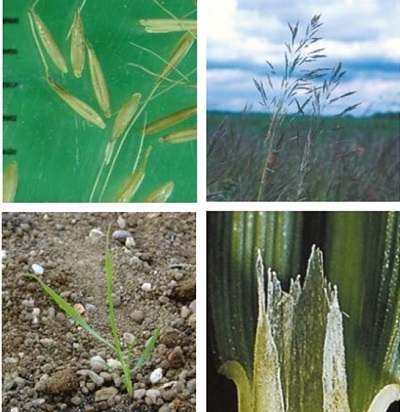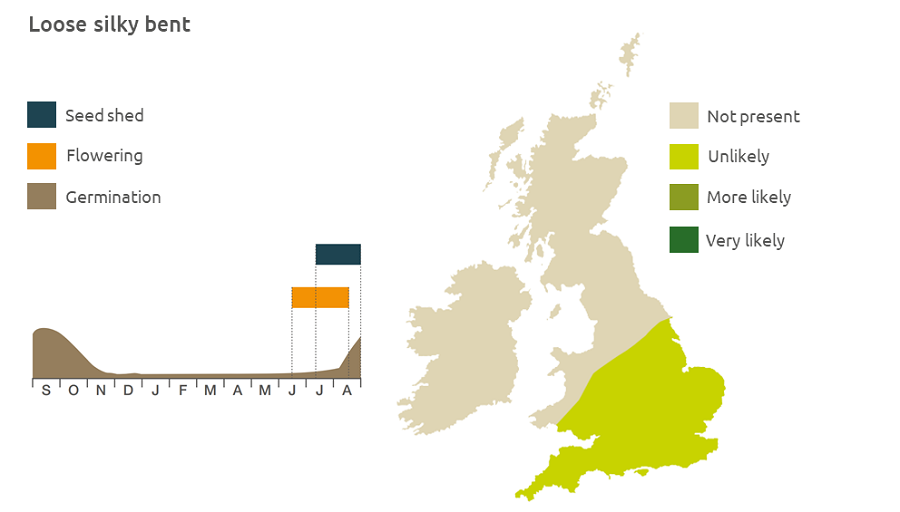- Home
- Knowledge library
- Distribution and biology of loose silky bent in the UK
Distribution and biology of loose silky bent in the UK
Loose silky bent is a grass weed that can occur abundantly in cereals, and may be confused with black-grass. Find out how to identify and control it.
Overview
Loose silky bent (Apera spica-venti) is occasionally very abundant in cereal fields. It seeds profusely with light seeds which can travel long distances. Seeds usually germinate in autumn and overwinter as young plants. Because seeds have a relatively long survival, germination can be delayed until the conditions are favourable. The seeds can shed and germinate before a crop matures, making control difficult.
- Some populations are associated with herbicide resistance
Weed Resistance Action Group (WRAG)
Description
It is a tufted or solitary annual grass growing to 100 cm tall, with stout or slender, green or purple stems. It has a fine appearance with smooth leaf sheaths. The flowerhead is oblong, open and feathery.
Key features
Plant: The plant does not spread by rhizomes or stolons.
Flowers: The flowerhead has more-open spreading branches than other bents.
Lookalikes
Loose silky bent may be confused with black-grass at the young plant stage of development because of the reddish/purple colouring of the leaf sheath. When mature, loose silky bent has more-limited tillering than black-grass, does not produce rhizomes or stolons unlike other bents, and tends to be more upright in later habit.

Location and life cycle

Geographic distribution
Loose silky bent is not widely distributed but found in arable fields, sandy tracks and roadsides up to an altitude of 650m.
Soil type
It grows in bare ground on light soils such as sand and light loam.
Seed statistics
- Seed longevity: >5 years
- Seed weight: 0.067 mg
- Seeds/plant: Up to 600
Management
Grass breaks or spring cropping can reduce populations. In reduced tillage situations, allow seedlings to germinate and then cultivate or harrow seedlings when the soil is dry. Some resistance to ureas and amides and ALS inhibitors has been found in mainland Europe.
For advice on herbicides, please speak with your agronomist or adviser.
When was this information last updated?
This page is based on content from the encyclopaedia of arable weeds publication. Since it was first released in 2008, the publication has been redesigned several times but not revised. However, it remains a good foundation for general information on the distribution and biology of weeds.

